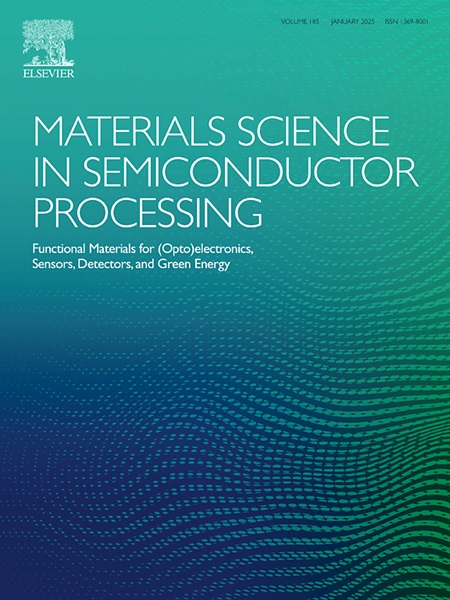Increasing bending strength of a flexible organic solar cell by removing HTL layer
IF 4.6
3区 工程技术
Q2 ENGINEERING, ELECTRICAL & ELECTRONIC
引用次数: 0
Abstract
Organic solar cells are one of the most reputable new types of solar cells, and much research has been done to improve performance and increase their application. One of the main applications of this type of solar cell is its application in flexible solar cells. One of the disadvantages of this application is the short lifetime of the flexible organic solar cell due to repeated bending. In this paper, we tried to remove the hole transport layer (HTL) by applying a cold N plasma jet to the PET/ITO surface and increasing the work function of the ITO. Subsequently, the increment of the ITO work function makes the removal of the hole transfer layer possible. By removing the hole transfer layer, the overall thickness of the solar cell decreases, and the possibility of bending the solar cell increases. Solar cell lifetime is significantly improved after plasma treatment of the PET/ITO and the hole transport layer is removed, and measured solar cell efficiency after 30 days of continuous bending before and after HTL elimination was 2.14 % & 3.05 %, respectively.
通过去除HTL层提高柔性有机太阳能电池的弯曲强度
有机太阳能电池是最受欢迎的新型太阳能电池之一,在提高其性能和增加其应用方面已经进行了大量的研究。这种类型的太阳能电池的主要应用之一是它在柔性太阳能电池中的应用。这种应用的缺点之一是由于反复弯曲,柔性有机太阳能电池的寿命很短。在本文中,我们试图通过在PET/ITO表面施加冷N等离子体射流并增加ITO的功函数来去除空穴传输层(HTL)。随后,ITO功函数的增加使得空穴转移层的去除成为可能。通过去除孔转移层,太阳能电池的整体厚度减小,太阳能电池弯曲的可能性增加。PET/ITO等离子体处理和去除空穴传输层后,太阳能电池寿命显著提高,去除HTL前后连续弯曲30天后的太阳能电池效率为2.14%;分别为3.05%。
本文章由计算机程序翻译,如有差异,请以英文原文为准。
求助全文
约1分钟内获得全文
求助全文
来源期刊

Materials Science in Semiconductor Processing
工程技术-材料科学:综合
CiteScore
8.00
自引率
4.90%
发文量
780
审稿时长
42 days
期刊介绍:
Materials Science in Semiconductor Processing provides a unique forum for the discussion of novel processing, applications and theoretical studies of functional materials and devices for (opto)electronics, sensors, detectors, biotechnology and green energy.
Each issue will aim to provide a snapshot of current insights, new achievements, breakthroughs and future trends in such diverse fields as microelectronics, energy conversion and storage, communications, biotechnology, (photo)catalysis, nano- and thin-film technology, hybrid and composite materials, chemical processing, vapor-phase deposition, device fabrication, and modelling, which are the backbone of advanced semiconductor processing and applications.
Coverage will include: advanced lithography for submicron devices; etching and related topics; ion implantation; damage evolution and related issues; plasma and thermal CVD; rapid thermal processing; advanced metallization and interconnect schemes; thin dielectric layers, oxidation; sol-gel processing; chemical bath and (electro)chemical deposition; compound semiconductor processing; new non-oxide materials and their applications; (macro)molecular and hybrid materials; molecular dynamics, ab-initio methods, Monte Carlo, etc.; new materials and processes for discrete and integrated circuits; magnetic materials and spintronics; heterostructures and quantum devices; engineering of the electrical and optical properties of semiconductors; crystal growth mechanisms; reliability, defect density, intrinsic impurities and defects.
 求助内容:
求助内容: 应助结果提醒方式:
应助结果提醒方式:


